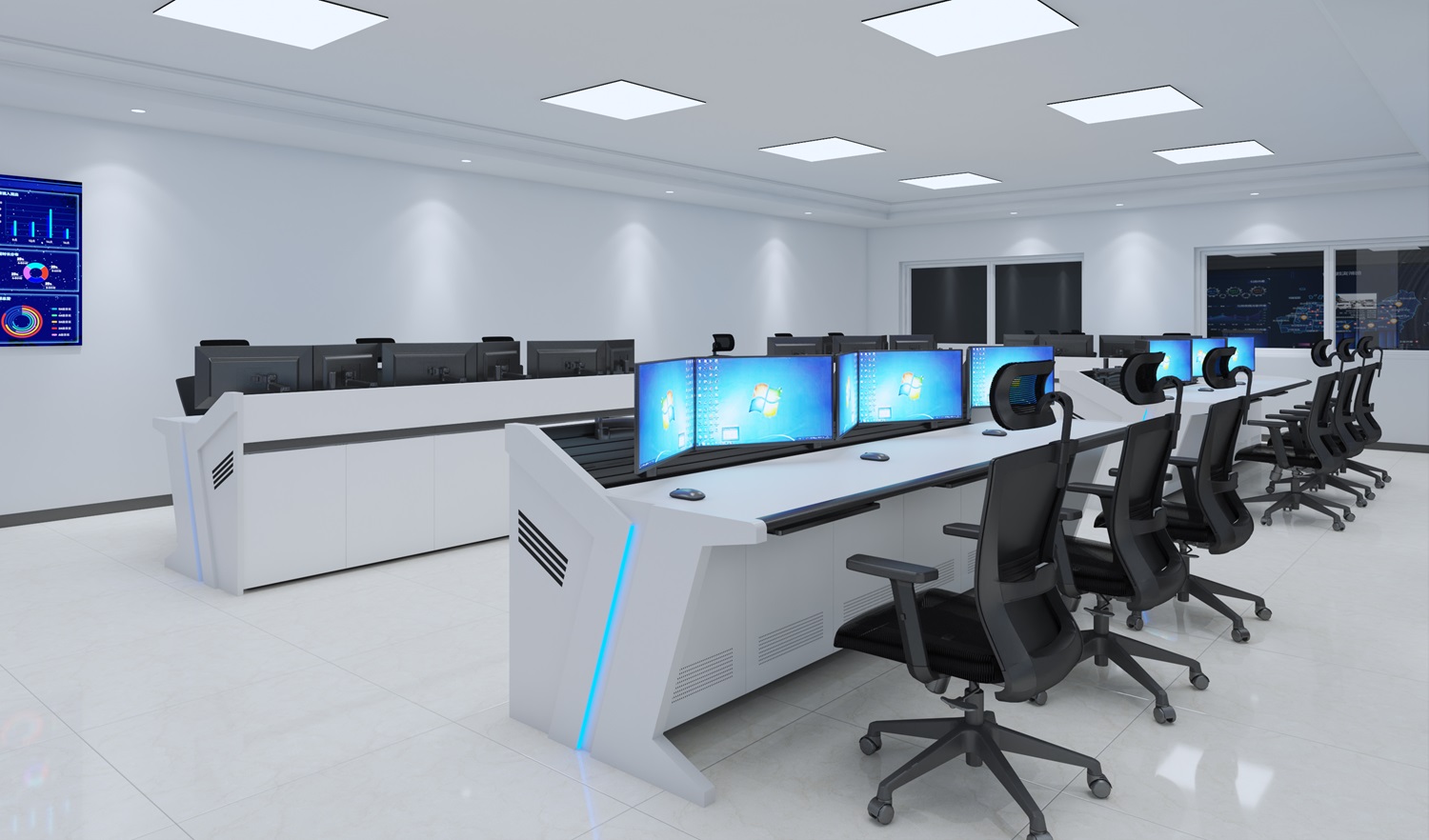There are obvious differences in design, function and purpose between control room consoles, operating desks and ordinary office desks and chairs. The following are the main differences between them:
- Design purpose:
Console/operating desk: designed for specific work scenarios, such as monitoring, command, dispatching, etc., which require the integration of multiple devices and functions, emphasizing ergonomics and work efficiency.
Ordinary desks and chairs: designed for daily life and general work scenarios, such as home, office, classroom, etc., mainly used for basic activities such as dining, writing, and using computers.
- Functionality:
Console/operating desk: integrates multiple functions such as equipment installation, cable management, data transmission, multi-screen display, etc. to meet complex operation needs.
Ordinary desks and chairs: the functions are relatively simple, mainly used to support the body and place items, and do not have integrated equipment and special functions.
- Ergonomics:
Console/operating desk: designed according to the operator’s working habits and body size to reduce fatigue and improve work efficiency.
Ordinary desks and chairs: although ergonomics is also considered, it is more to meet general comfort needs, not as sophisticated as professional consoles.
- Materials and structures:
Console/operating table: usually use more durable materials, such as cold-rolled steel, fireproof board, aluminum profiles, etc., and the structure is designed to withstand heavy loads and frequent use.
Ordinary tables and chairs: materials and structures are relatively simple, such as wood, plastic, etc., to meet basic use needs.
- Customization:
Console/operating table: often customized according to specific needs, including size, shape, functional modules, etc.
Ordinary tables and chairs: although there are also customized services, they are usually designed according to personal preferences and home environment.
- Technology integration:
Console/operating table: may integrate advanced technologies, such as intelligent control systems, automation equipment, data interfaces, etc.
Ordinary tables and chairs: usually do not include these technical integrations, even if they do, they are relatively simple electronic equipment, such as lamps, power sockets, etc.
- Environmental adaptability:
Console/operating table: may need to be used in specific environments, such as waterproof, dustproof, anti-static, anti-interference, etc.
Ordinary tables and chairs: The adaptability to the environment is not high, and it is mainly considered for indoor use.
- Maintenance and stability:
Console/operating table: It is required to be easy to maintain and stable and reliable, because they are usually used for critical tasks and long-term operation.
Ordinary tables and chairs: The maintenance requirements are relatively low, and the durability requirements are not as strict as those of consoles.
- Cost:
Console/operating table: Due to the various special requirements mentioned above, its cost is usually much higher than that of ordinary tables and chairs.
Ordinary tables and chairs: The cost is relatively low because the materials and manufacturing processes used are relatively conventional.
In general, consoles and operating tables are professional equipment designed for specific work needs, while ordinary tables and chairs are general furniture provided for daily life and general work scenes.

Leave a Reply